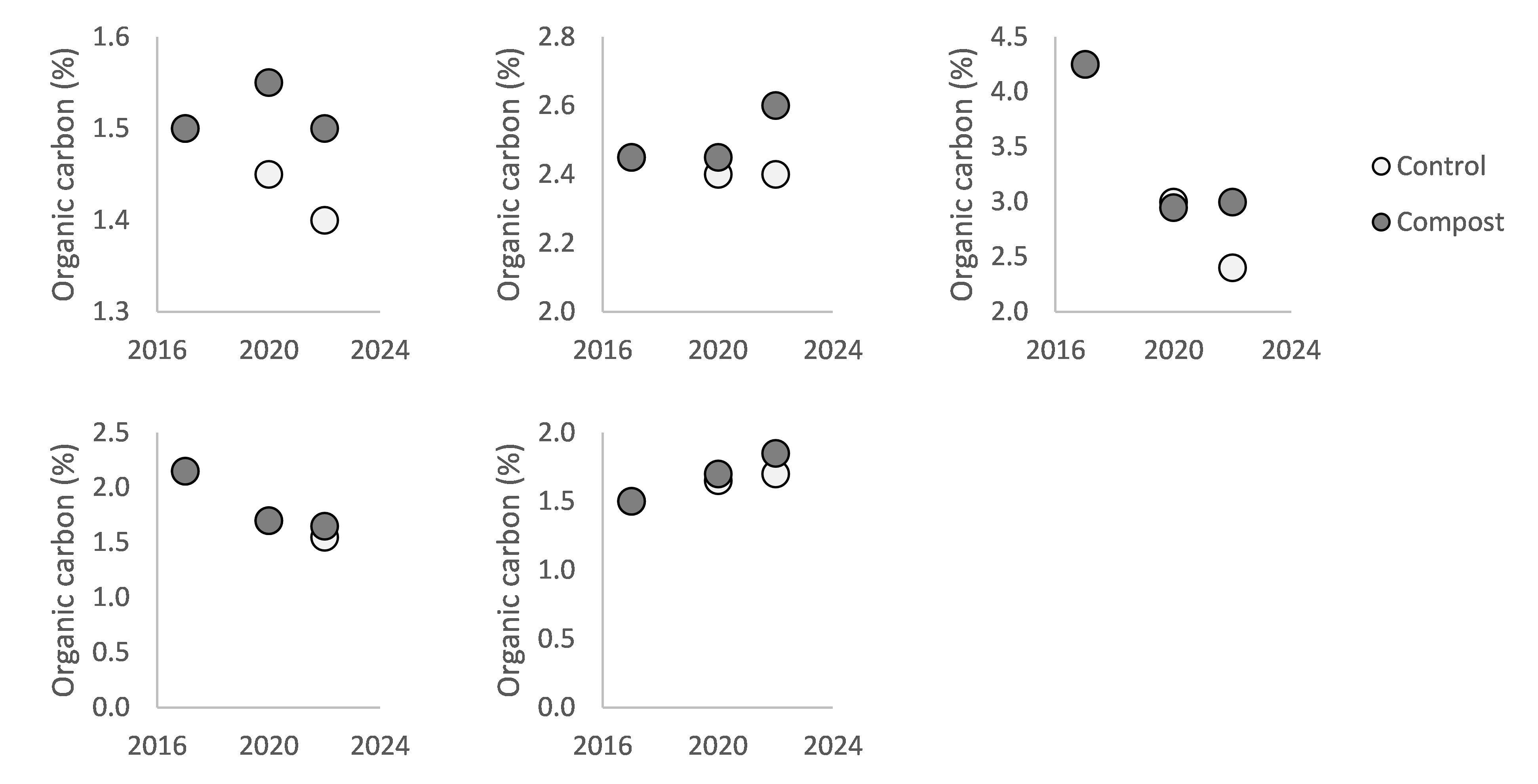Carbon storage: One measurement is as good as no measurement
1 February 2023 - Soil Carbon Check
Making your own compost from organic residues, such as roadside grass clippings, seems like a promising way to increase the organic matter content and sequestered carbon (CO2) in the soil. Eurofins has investigated carbon sequestration in soil with homegrown compost. The study showed that building up carbon in soil takes time and that a one-time measurement is insufficient.
Eurofins has collaborated on a study over the past five years to see if using locally produced compost is an effective way to increase a soil’s capacity for carbon (CO2) storage. This is good for the climate and soil fertility.
One advantage of locally producing compost from roadside clippings, for example, is that no transportation is required. Managing roadsides and ditches releases a large amount of clippings each year. The cut material can then be made into compost on the farmer's yard and used as a soil conditioner.
Effect of additional compost
One of the questions addressed by the trials was to what extent the level of organic carbon content in the soil can be increased with compost. Five plots were selected for this purpose and within each plot, one part was fertilised annually with and one without compost. The compost application rate for each plot was always the same, at 20 tons/ha per year, and silage maize was grown on the plots for five years.
Yield and quality were measured annually in the silage maize. No effect was found on the yield and quality of silage maize on the plots where additional compost was applied. However, the soil organic carbon content was found to be slightly higher after applying compost compared to the control. However, the differences in soil organic carbon were not significant between the control and compost treatments (Figure 1).

Sufficient compost needed
Unfortunately, therefore, the effect of compost application on both the yield and quality of silage maize and the increase in carbon content was somewhat disappointing. The most obvious explanation is that the amount of compost that was available was too low to achieve a real increase in organic carbon. 20 tons/ha was given annually; no more was available on the farms. With this amount of compost, it is not possible to increase the carbon content in the soil.
Soil tests showed that for these plots, the organic carbon decomposition rate ranged from 3.2% to 3.8%. At an average organic carbon content of 2.4%, this means a decomposition of just under 2,500 kg to nearly 3,000 kg of organic carbon in the soils.
On the other hand, when growing silage maize, fertilising with cattle manure and a green manure crop provides carbon inputs. An average amount of effective carbon sits at over 1,000 kg/ha per year.
When you combine build-up and decomposition, there appears to be a deficit of 1,500-2,000 kg of organic matter. So this difference must be compensated for at a minimum to remain at level. To achieve a higher carbon content, additional organic matter is needed.
This can be done by applying compost, as 20 tons of compost corresponds to about 1,800 kg of effective carbon. So, at a 1,500 kg deficit, a 20-ton application is excellent compensation and the carbon content will increase. However, at a deficit of 2,000 kg, the given amount is too small to compensate. An annual supply of at least 30 tons of compost per ha is therefore needed to raise the soil carbon content.
Measuring once is insufficient
However, the above calculation is based on average figures. To know with certainty whether carbon is sequestered in the soil, one measurement is definitely inadequate. Monitoring carbon build-up over time can be done by taking an annual measurement in soil with a Soil Carbon Check. This soil test provides new insights into the build-up and development of carbon over the years.
Furthermore, it is also important to plan the application of organic soil conditioners well. With the handy Carbon Calculator, the effect of a particular measure can be calculated, allowing you to determine how much of a particular soil conditioner is needed to achieve the desired increase.
When it comes to homegrown compost, the remaining challenge is then to get enough compost.
Want to find out more?
Check out our Soil Carbon Check for more information on soil carbon storage and how to measure it.
Want to know how much CO2 is stored in the organic matter in your soil? Then order the Soil Carbon Check >




